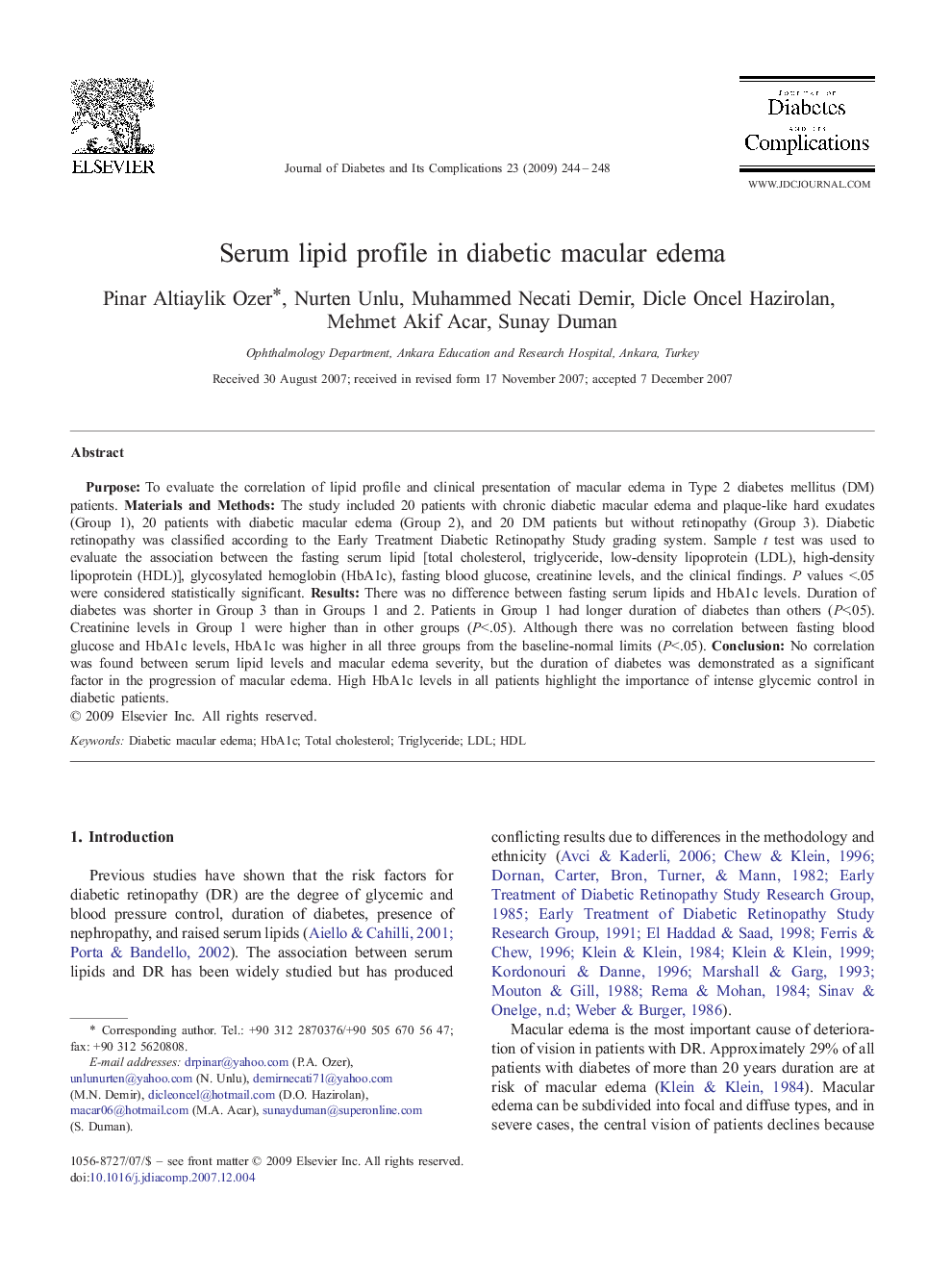| Article ID | Journal | Published Year | Pages | File Type |
|---|---|---|---|---|
| 2804311 | Journal of Diabetes and its Complications | 2009 | 5 Pages |
PurposeTo evaluate the correlation of lipid profile and clinical presentation of macular edema in Type 2 diabetes mellitus (DM) patients.Materials and MethodsThe study included 20 patients with chronic diabetic macular edema and plaque-like hard exudates (Group 1), 20 patients with diabetic macular edema (Group 2), and 20 DM patients but without retinopathy (Group 3). Diabetic retinopathy was classified according to the Early Treatment Diabetic Retinopathy Study grading system. Sample t test was used to evaluate the association between the fasting serum lipid [total cholesterol, triglyceride, low-density lipoprotein (LDL), high-density lipoprotein (HDL)], glycosylated hemoglobin (HbA1c), fasting blood glucose, creatinine levels, and the clinical findings. P values <.05 were considered statistically significant.ResultsThere was no difference between fasting serum lipids and HbA1c levels. Duration of diabetes was shorter in Group 3 than in Groups 1 and 2. Patients in Group 1 had longer duration of diabetes than others (P<.05). Creatinine levels in Group 1 were higher than in other groups (P<.05). Although there was no correlation between fasting blood glucose and HbA1c levels, HbA1c was higher in all three groups from the baseline-normal limits (P<.05).ConclusionNo correlation was found between serum lipid levels and macular edema severity, but the duration of diabetes was demonstrated as a significant factor in the progression of macular edema. High HbA1c levels in all patients highlight the importance of intense glycemic control in diabetic patients.
